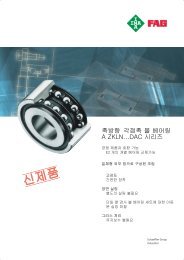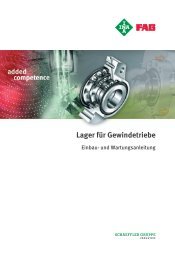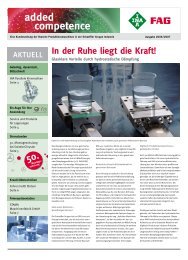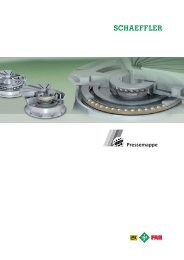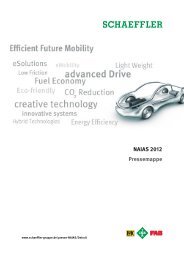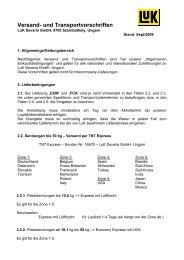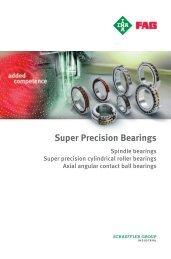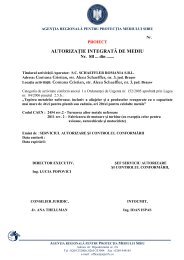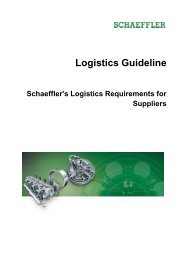Double clutch
Double clutch
Double clutch
Create successful ePaper yourself
Turn your PDF publications into a flip-book with our unique Google optimized e-Paper software.
The wet <strong>clutch</strong><br />
Complexity and<br />
requirements<br />
The wet double <strong>clutch</strong>es currently in the market<br />
or due to enter the market in the near<br />
future are actuated by hydraulic means. The<br />
pressure chambers rotate at the speed of the<br />
internal combustion engine (figure 10). This<br />
design with rotating actuator pistons is generally<br />
also used for the <strong>clutch</strong>es in classical converter<br />
transmissions.<br />
In order to move the hydraulic oil from the<br />
hydraulic unit to the pressure chambers, rotary<br />
passages are required that are sealed by slotted<br />
dynamic seals allowing leakage. This leakage is<br />
one reason why an additional hydraulic power<br />
pack is necessary to hold the <strong>clutch</strong> at the contact<br />
point while the engine is not rotating in<br />
order to achieve stop/start functionality. The<br />
<strong>clutch</strong> can then be closed easily and quickly<br />
when the engine restarts.<br />
The pressure chambers are sealed by two seals<br />
each on the inside and outside diameter. In<br />
order to compensate for the influence of the centrifugal<br />
oil pressure that builds up under rota-<br />
Figure 10 Wet double <strong>clutch</strong> with rotating actuator<br />
pistons<br />
LuK SYMPOSIUM 2006<br />
Figure 11 Wet lever-actuated double <strong>clutch</strong><br />
<strong>Double</strong> <strong>clutch</strong> 9<br />
tion, additional oil chambers are included parallel<br />
to pressure chambers. At least one further<br />
seal is required per centrifugal oil chamber. The<br />
seals are largely responsible for the hysteresis in<br />
<strong>clutch</strong> actuation.<br />
LuK, however, favours an actuation concept<br />
using lever springs similar to the state of the art<br />
used in dry, actively closed <strong>clutch</strong>es (figure 11).<br />
The force is applied by the non-rotating, static<br />
actuation elements via engage bearings to the<br />
lever springs rotating at engine speed [5]. The<br />
engage bearings are thus the interface between<br />
stationary and rotating parts. The lever spring is<br />
suspended in the outer disc carrier and actuates<br />
a contact ring that presses the disc assembly<br />
together. If an actuator fails, the <strong>clutch</strong> opens<br />
automatically because of the force of lever<br />
spring. The external actuation forces are supported<br />
directly on a cover bearing, so the crankshaft<br />
is free from axial forces.<br />
This system has the advantage that several<br />
actuation systems are suitable for use. If hydrostatic<br />
actuation elements or rotary or swivel<br />
levers are used in combination with slave cylinders,<br />
classic hydraulic control systems and electrohydraulic<br />
power packs can be utilised. An<br />
electromechanical actuator system can be simply<br />
adapted, too.<br />
Actuation systems with an electrically-driven<br />
energy source independent of the internal com-<br />
127



